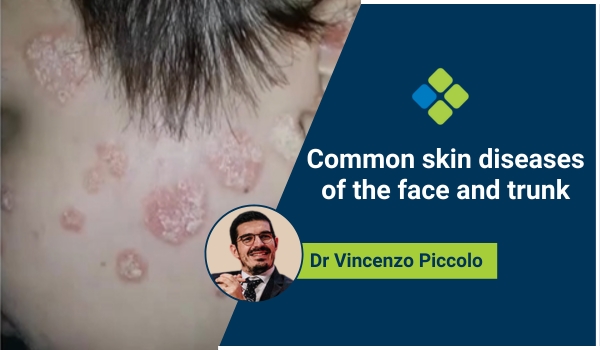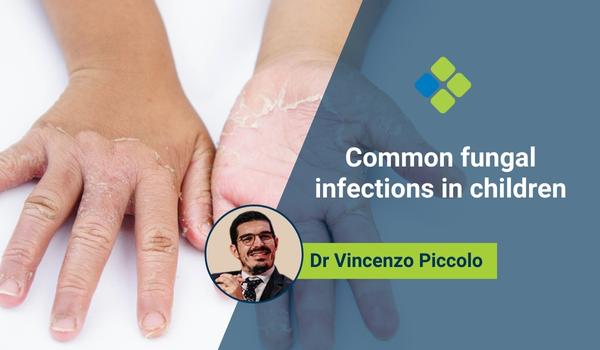Diagnosis & treatment of vulvar skin diseases
Vulvar skin diseases are a common concern among women of all ages. Let's discuss common vulvar skin diseases, symptoms and treatment options.

HealthCert Education
Vulvar skin diseases are a common concern among women of all ages. Primary care doctors play a critical role in identifying and treating these conditions. However, many GPs may not feel comfortable diagnosing or managing vulvar skin diseases if they haven't received adequate training in general dermatology. Let's discuss the most common vulvar skin diseases, their symptoms, and treatment options.
For further information on this topic, you may be interested to learn more about the HealthCert Professional Diploma program in General Dermatology.
Vulvar dermatitis
One of the most common vulvar skin diseases is vulvar dermatitis (a general term used to describe inflammation of the vulvar skin). The most common type of vulvar dermatitis is atopic dermatitis. Its symptoms include red, itchy, and scaly skin. Other types of vulvar dermatitis include irritant contact dermatitis, caused by exposure to irritants such as soaps, laundry detergents, or other chemicals, and allergic contact dermatitis – caused by an allergic reaction to a specific substance or material (clothes).
Diagnosis of vulvar dermatitis is typically made based on the patient's symptoms and physical examination, with a thorough examination of the vulvar area. A skin scraping or biopsy may also be necessary to rule out other conditions, such as lichen sclerosus or squamous cell carcinoma.
Treatment options for vulvar dermatitis include topical corticosteroids, such as hydrocortisone cream, to reduce inflammation and itching and emollients to soothe and moisturise the skin. In cases of irritant or allergic contact dermatitis, identifying and avoiding the causative agent is also crucial.
Lichen sclerosus
The above-mentioned lichen sclerosus is another common vulvar skin disease. It is a chronic condition that causes thick, white, and itchy skin on the vulva. This condition can also cause pain during sexual intercourse or while urinating. Vulvar lichen sclerosus is more common in postmenopausal women and is believed to be caused by a combination of genetic and environmental factors.
Diagnosis of vulvar lichen sclerosus is typically based on the patient's symptoms and physical examination, with a thorough examination of the vulvar area and a biopsy of the affected skin.
Treatment options for vulvar lichen sclerosus include the use of topical corticosteroids to reduce inflammation and itching, and topical or oral retinoids to slow the progression of the disease. In more severe cases, surgery may be necessary to remove the affected tissue.
Vulvar candidiasis
Vulvar candidiasis, or yeast infections, is another common vulvar skin disease. Symptoms include itching, burning, and a thick, white discharge. Yeast infections are caused by an overgrowth of the fungus Candida albicans and can be diagnosed by a vaginal swab, culture, or PCR.
Treatment options for vulvar candidiasis include over-the-counter or prescription antifungal medications, such as Clotrimazole, Miconazole, Terconazole cream, or oral fluconazole.
Vulvar cancer
Vulvar cancer is a rare but serious condition that occurs when abnormal cells in the vulva grow out of control. Symptoms include a lump or sore on the vulva, itching or burning, and bleeding. Vulvar cancer is more common in older women and those who have a history of precancerous conditions such as vulvar intraepithelial neoplasia.
Diagnosis of vulvar cancer is typically based on the patient's symptoms, physical examination, and a biopsy of the affected tissue.
Treatment options for vulvar cancer include:
- Surgery (wide local excision or radical vulvectomy),
- Radiation therapy, and
- Chemotherapy
Vulvar skin diseases are a common concern among women and primary care doctors play an important role in identifying and treating these conditions. By understanding the symptoms and treatment options for the most common vulvar skin diseases, GPs can provide better care for their patients.
– Dr Rosmy De Barros
References:
- Fernando GarcĂa-Souto, Ana Isabel Lorente-Lavirgen, Francisco Manuel Ildefonso Mendonça, Manuel GarcĂa-de-Lomas, Mariana Viktoria Hoffner-Zuchelli, Desiree Rodriguez-Ojeda, Elena Pozo, JosĂ© BernabĂ©u-Wittel, Vulvar dermatoses: a cross-sectional 5-year study. Experience in a specialized vulvar unit, Anais Brasileiros de Dermatologia, Volume 97, Issue 6, 2022, Pages 747-756, ISSN 0365-0596, https://doi.org/10.1016/j.abd.2021.11.006. (https://www.sciencedirect.com/science/article/pii/S0365059622001957)
- Krapf JM, Mitchell L, Holton MA, Goldstein AT. Vulvar Lichen Sclerosus: Current Perspectives. Int J Womens Health. 2020 Jan 15;12:11-20. doi: 10.2147/IJWH.S191200. PMID: 32021489; PMCID: PMC6970240.
- Seeniammal S, Selvakumar M, Nirmaladevi P. Clinicomycological study of vulvovaginal candidiasis. Indian J Sex Transm Dis AIDS. 2021;42(1):57-61. doi:10.4103/ijstd.IJSTD_49_18
- Nandwani M, Barmon D, Begum D, Liegise H, Kataki AC. An Overview of Vulvar Cancer: A Single-Center Study from Northeast India. J Obstet Gynaecol India. 2019 Dec;69(6):541-545. doi: 10.1007/s13224-019-01261-z. Epub 2019 Aug 16. PMID: 31844370; PMCID: PMC6888794.

 1800 867 1390
1800 867 1390

